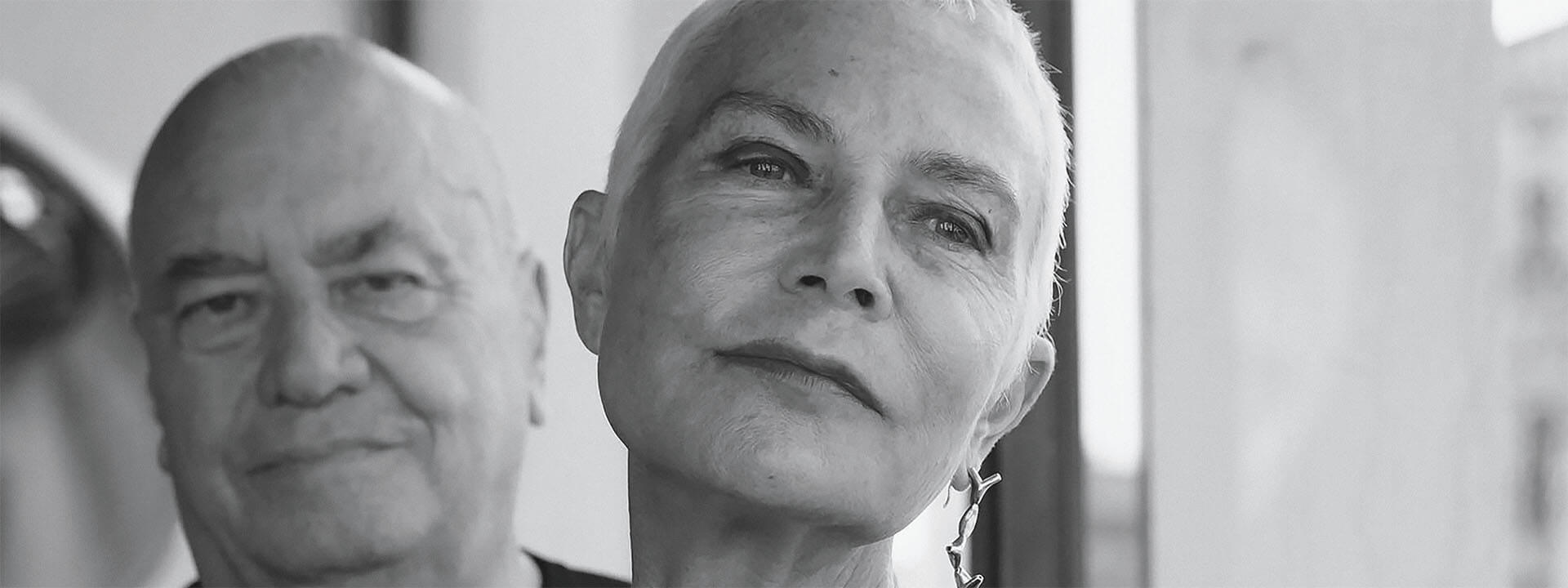Fuksas
DORIANA O. MANDRELLI FUKSAS
DESIGN PRINCIPAL & FOUNDING PARTNER
Doriana Mandrelli Fuksas was born in Rome, where she graduated in History of Modern and Contemporary Architecture at the University of Rome “La Sapienza” in 1979. She also earned a degree in Architecture from ESA, École Spéciale d’Architecture in Paris. She has taught at the Institute of History of Art at the Faculty of Letters and Arts and at the Industrial Design Department ITACA at “La Sapienza” University in Rome.
Doriana curated four “Special Projects” at the “VII Mostra Internazionale di Architettura di Venezia” in 2000, under the theme *Less Aesthetics, More Ethics*. These included exhibitions on Jean Prouvé, Jean Maneval, the Peace Pavilion, and Architecture of Spaces, as well as the Contemporary Art section.
Since 1985, she has worked closely with Massimiliano Fuksas and has been the director in charge of “Fuksas Design” since 1997. In 2002, she was decorated Officier de l’Ordre des Arts et des Lettres de la République Française.
In 2006, the New Trade Fair Rho-Pero in Milan won the “Awards for Excellence Europe” by the Urban Land Institute, receiving first prize. The New Rome-Eur Congress Centre was awarded Best Building Site at the Wallpaper* Design Awards 2012. In 2013, Doriana was decorated Commandeur de l’Ordre des Arts et des Lettres de la République Française. That same year, the Shenzhen Bao’an International Airport-T3 received the Idea-Tops Awards for Best Transportation Space in Shenzhen, China.
From 2014 to 2015, she wrote the Design column for the Italian newspaper *La Repubblica*. On January 1, 2020, she was awarded the title of Chevalier de l’Ordre de la Légion d’Honneur Française.
MASSIMILIANO FUKSAS
DESIGN PRINCIPAL & FOUNDING PARTNER
Massimiliano Fuksas, of Lithuanian descent, was born in Rome in 1944. He graduated in Architecture from the University of Rome “La Sapienza” in 1969. Since the 1980s, he has been one of the leading figures in contemporary architecture. From 1994 to 1997, he served as a member of the Planning Commissions in Berlin and Salzburg.
In 1998, Fuksas was honored with the “Vitruvio International a la Trayectoria” award in Buenos Aires for his professional career. From 1998 to 2000, he directed the “VII Mostra Internazionale di Architettura di Venezia,” focusing on the theme *Less Aesthetics, More Ethics*.
In 1999, he was awarded the Grand Prix National d’Architecture Française and was named National Academic of San Luca. In 2000, he was decorated as Commandeur de l’Ordre des Arts et des Lettres de la République Française. Two years later, he received the Honorary Fellowship of the American Institute of Architects (AIA) in Washington, D.C. In 2005, he became a member of the Académie
d’Architecture in Paris.
In 2006, he was awarded the Honorary Fellowship of the Royal Institute of British Architects (RIBA) in London and named Cavaliere di Gran Croce della Repubblica Italiana. In 2010, Fuksas was decorated with the Légion d’Honneur by the French President.
In 2012, he received the Medal of the Presidency of the Council of Ministers in Italy, as well as the Global Lithuanian Award in the Art and Culture category in Vilnius, Lithuania. The following year, the Shenzhen Bao’an International Airport-T3 won the Idea-Tops Awards for Best Transportation Space in Shenzhen, China.
In 2014, Fuksas received both the Architizer A+ Award and the Architizer A+ Popular Choice Award in the Transportation-Airports category in New York. From 2000 to 2015, he contributed to the architecture column founded by Bruno Zevi in the Italian news magazine *L’Espresso*. From 2014 to 2015, he co-authored, with his wife Doriana, the Design column in the Italian newspaper *La Repubblica*.
Throughout his career, he has been a Visiting Professor at several universities, including Columbia University in New York, the École Spéciale d’Architecture in Paris, the Akademie der Bildenden Künste in Vienna, and the Staatliche Akademie der Bildenden Künste in Stuttgart. Fuksas has long devoted his attention to studying urban issues in large metropolitan areas.

